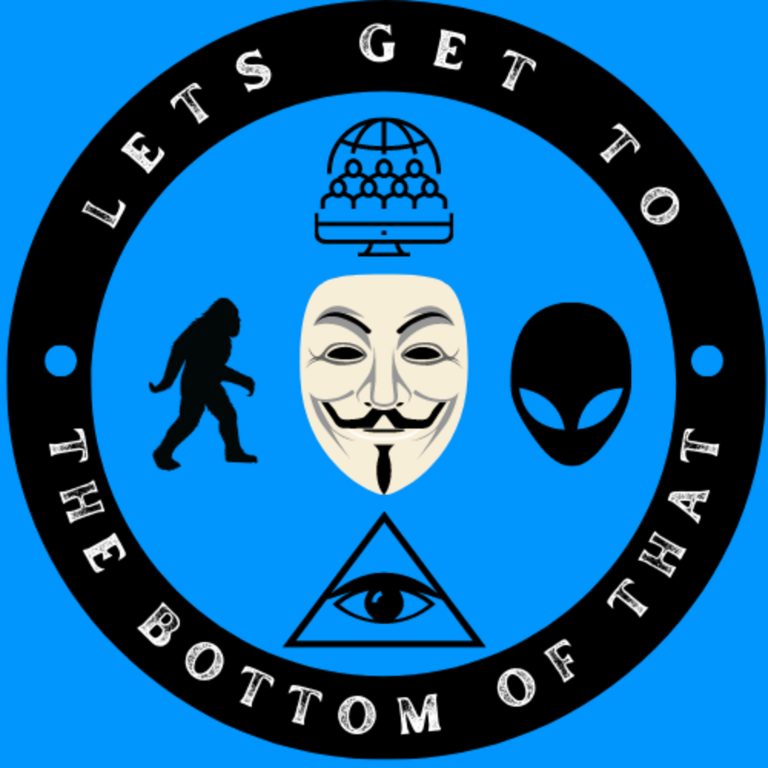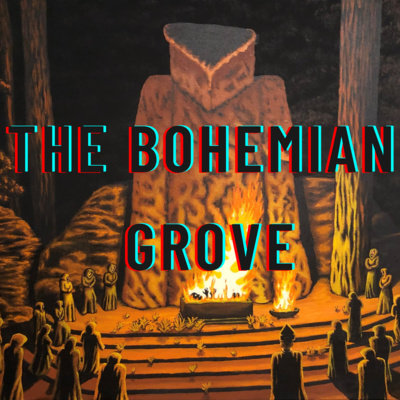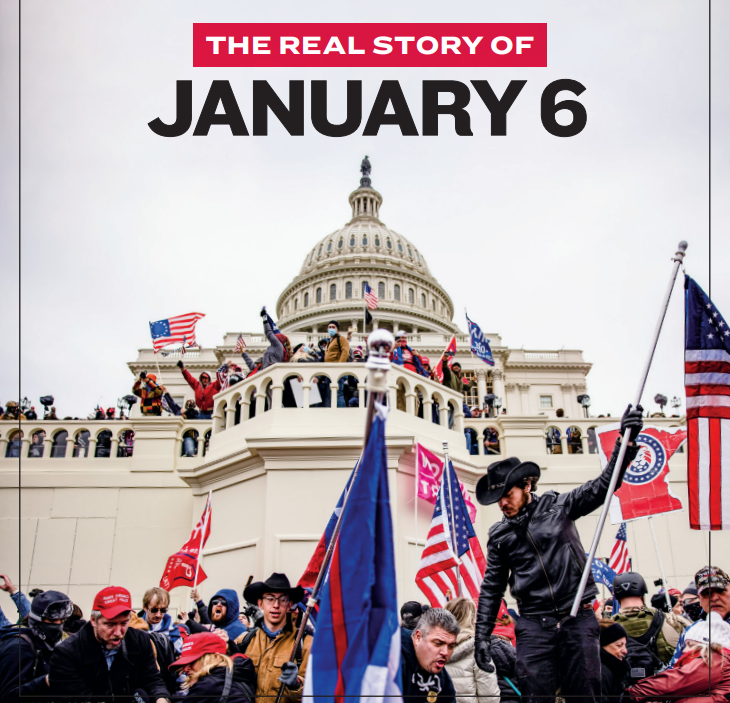
This show will get to the bottom of all those questions you need answers to. Each week, we will cover a topic that has been left unattended in the public square, with unanswered questions surrounding the “official story.” You will be able to determine on this show if the topic has been deemed a “Conspiracy” or a “Conspiracy Theory”.
If you want to support the show, you can become a subscriber and get access to bonus content. Click here to support https://creators.spotify.com/pod/profile/bottomofthat/subscribe
The Bohemian Grove had frequent visits by such prominent entities as Presidents Herbert Hoover and Calvin Coolidge, artists represented only a minute fraction of the Grove’s regular visitors, with Senators, bankers, and prominent diplomats soon coming to dominate the booze-soaked discourse and atmosphere. Alliances of global significance were forged; plans were laid; and plots were hatched that came to designate Bohemian Grove as less a relaxing weekend getaway as some of the most significant blueprints for social engineering as we know it. In 1929, a 40-foot statue of an owl, sculpted by noted Armenian-American sculptor (and Grove president) Haig Patigian, came to serve as a central focus of Bohemian Grove and has been associated as the most visible emblem of this secretive clique ever since.

“The Bohemian Grove, that I attend from time to time—the Easterners and the others come there—but it is the most faggy goddamned thing you could ever imagine, that San Francisco crowd that goes in there; it’s just terrible! I mean I won’t shake hands with anybody from San Francisco.” – Richard Nixon, quoted during the Watergate Tapes sometime in 1973.
“The Bohemian Grove, that I attend from time to time—the Easterners and the others come there—but it is the most faggy goddamned thing you could ever imagine, that San Francisco crowd that goes in there; it’s just terrible! I mean I won’t shake hands with anybody from San Francisco.” – Richard Nixon, quoted during the Watergate Tapes sometime in 1973. Researchers and critics are quick to point out that the origins of Bohemian Grove may lie in the ancient Druidic circles of the Celts or the Eleusinian mysteries of the Greeks; exclusive, typically all-male, rites in which celebrants huddled around a bonfire beneath starlit nights, sharing communal mysteries of death and rebirth through the sacrifice of a bull in homage to the gods. But the truth of the Grove’s origin is much more mundane—if no less romantic, in a distinctly American way. Bohemian Grove emerged from a private but informal club of artists, journalists, and writers known as the Bohemian Club. The original Bohemian Club was founded in 1872 by a group of journalists who sought to foster a mutual appreciation of the arts and pursued a romantic if the hackneyed notion of the artist as a poverty-stricken garrett dweller devoted more to his chosen medium than the mundanities of daily life (although Oscar Wilde was noted to have remarked upon visiting the Club in 1882, “I never saw so many well-dressed, well-fed, business-looking Bohemians in my life.”) There’s always been a long-running pretension of artistic patronage among political figures (perhaps as true today as it was in the 19th century) enamored with the myth of the starving artist, and it soon became apparent that the meager salaries of a journalist could be easily bought by both political and industrial funding. The result was that by the turn of the century, the likes of Ambrose Bierce and composer Louis Glass were hobnobbing regularly with the likes of Henry Morgan and William Randolph Hearst.
Eventually by the 1940s, owing to frequent visits by such prominent entities as Presidents Herbert Hoover and Calvin Coolidge, artists represented only a minute fraction of the Grove’s regular visitors, with Senators, bankers and prominent diplomats soon came to dominate the booze-soaked discourse and atmosphere. Alliances of global significance were forged; plans were laid; and plots were hatched that came to designate Bohemian Grove as less a relaxing weekend getaway as some of the most significant blueprints for social engineering as we know it.
In 1929, a 40-foot statue of an owl, sculpted by noted Armenian-American sculptor (and Grove president) Haig Patigian, came to serve as a central focus of Bohemian Grove and has been associated as the most visible emblem of this secretive clique ever since. Most notably, it serves as the backdrop for the Grove’s climactic “Cremation of Care” ceremony, a dramatization intended to symbolize the sacrifice of the cares, anxieties and worries of day to day existence (presumably, only of those affecting beleaguered servants of international finance.) The rite has since been enhanced by advanced electronics and pyrotechnic displays and, most dramatically for many years, the stentorian voice of Grove member Walter Cronkite; with leaked video footage giving the impression of something between a pagan ritual, an elaborate high school drama production and a laser light show (one quote regarding the Grove’s penchant for dramatics has been noted as stating that there are far more cost effective ways to waste energy budgets than on a fraternity talent show; but then again, the average American’s tax dollars are typically spent in any number of irrelevant ways and that politicians need creative expense budgets as much as anyone else.) It’s worth noting here that the owl has a myriad of different meanings from culture to culture. While for the Greeks, the bird was most strongly associated with the figure of Athena, goddess of wisdom and learning, for cultures including the Egyptians and the Celts, the owl represented the underworld; the overseer of souls through the subterranean hallways of death. And given that many of the top players over the years at Bohemian Grove have been linked to not only the shadowy echelons of power and control but assassination and wholesale murders under the guise of national wars and elaborately pre-staged “accidents,” it is perhaps more fitting that this latter symbolism be kept in mind. Of somewhat curious interest are the ‘encampments’ (a term sometimes found in Masonic and Masonic-derived circles in reference to a gathering of Masons) found at Bohemian Grove. These are primarily patrilineal quarters assigned to participants based on their particular status or field of industry, typically assigned with a self-effacing or jovial nickname; for example, the “Hill Billy Camp” is assigned to banking, political or media figures (typically with a net worth in excess of $15 Million). Others have included the Owl’s Nest (for presidents and military/defense contractors); Lost Angels (banking and defense Contractors); Cave Man (education and think-tanks, as well as oil companies and the media); Uplifters (corporate executives); Stowaway (oil companies, big business and Rockefellers); Silverado squatters (big business and defense contractors); Hideaway (think tanks and military/defense contractors); and Sempervirens (California corporations). It is in these encampments (in 2007, there were some 118) that contacts are forged and plans laid in the musk of the cabins reeking of 18-year old single malt Scotch and smug vainglory.
It is presumably in one of these very cabins in July of 1942 that plans were initially hatched between Dr. Ernest Lawrence, Dr. Robert Oppenheimer and the Hungarian-born Edward Teller, as well as various military and defense officials that would eventually lead to the Manhattan Project; an undertaking costing in excess of $2 billion dollars that led to the development of the Atomic bomb. Grove members are understandably proud of an achievement that cost the death of over 135,000 individuals—the vast majority, innocent civilians—and rarely miss a chance to regale newcomers to the festivities with countless tales heard second, third, fourth, and fifth-hand about what really went on beneath the whispering of the pines when Standard Oil money met U.C. Berkeley hands to fund the decisive American victory of WWII. It should be noted that the Grove even has their own patron saint in the form of St. John of Nepomuk, a martyred fourteenth century saint who was tortured and drowned by the Bohemian King Wenceslaus in the Vltava River rather than reveal the confessional secrets of the Bohemian Queen. Grove members claim that the figurehead represents the vow of secrecy that each member is sworn to uphold. Yet in light of the figure’s symbolic placement directly overlooking the Russian River, one wonders if it serves as a warning to would-be trespassers of the fate that may occur should they accidentally spill on to the secrets of the Grove.
Controversy of Bohemian Grove It should here be noted that no official deaths or accidents have ever been noted in conjunction with the Grove’s almost 150-year existence. Infiltrators have gone on to publish, document and videotape accounts of the on-goings without censure; presumably other than the embarrassment suffered by grown men—the supposed exemplars of cultural and moral prestige—drunkenly cavorting in front of a 40 foot effigy of an owl while the fate of the western world hangs in the hand of their junior executors. Still, not only is the correlation between Bohemian Grove and numerous other, much less frivolous, cliques well documented, on-goings at the Grove still carry the stigma of numerous unanswered questions. As mentioned earlier, one of the central ‘rites’ of Bohemian Grove is the ceremony known as the Cremation of Care, which invokes the figure of Bacchus—e.g., the Greek Dionysus, god of divine intoxication, ecstasy and vision—as patron of the Grove to rise from beyond the dead (it is interesting to note that ‘Grove’ itself is a term used by adherents of the modern Witchcraft movement, also as a court of ‘learning’ with ‘inner groves’ reserved only for the elect initiates of a coven). This seems parallel to the central plot of the Bacchae of Euripides, written in the fifth century B.C. where the god, enslaved and imprisoned by King Pentheus, Lord of Thebes, escapes and, disguised himself as a foreigner, leads his band of female Maenads in rites of sexual licentiousness and frenzy, eventually resulting in the sacrifice of Pentheus. Keep in mind that the celebrating Maenads are exclusively female; the participants of Bohemian Grove, on the other hand, are of course exclusively male. A quote from author and noted Grove member Herman Wouk springs to mind here: “Men can decently love each other; they always have, but women never quite understand.” But a more serious charge has emerged surrounding the club since the 1980s; that of many Grove member’s predilections for prostitution, particular of an excessively seedy kind. Sex workers—and it is worth noting, both female and male—have told allegations (perhaps graciously, perhaps fearfully, refusing to name names in all but a few cases) of lavish S & M-themed gatherings in the outer reaches of the camp that involved forced degradation, humiliation and forced injury (according to one former escort, by a circle consisting of several former Republican secretaries of state and defense) which left them scarred permanently and afraid for their lives. The Grove, however, as a non-profit private institution is outside the jurisdiction of state criminal investigation presumably because of the very influence it wields. Insinuations of sexual deviancy are one thing. Evidence of the influence of the Grove—particularly in nominally conservative, right-leaning Republican circles, from whom the Grove draws its strongest constituency—is apparent throughout American history. In his memoirs, former President (and Freemason) Herbert Hoover states that after then-President Calvin Coolidge’s announcement that he would not run for a second term in 1927, “a hundred men… editors, publishers, public officials and others from all over the country who were at the Grove, came to my camp demanding that I announce my candidacy.” The following summer, the Republican party unanimously supported Hoover’s bid for the presidency, a tenure which saw the development of the Council on Foreign Relations directly under his oversight. And indeed, membership at the Grove seems to have been a preliminary requisite for just about every Republican president since the foundation of the clique since Hoover; most notably, the candidacies of Nixon, Reagan and both George H.W. and George W. Bush are alleged to have found their initial support within the clustered encampments of Bohemian Grove, and more recently, California governor Arnold Schwarzenegger’s entry into the fray of state politics was secured by a raucous crowd of supporters from various encampments. Nor is Bohemian Grove a strictly American phenomenon. In 1991, the Grove elected as one of its keynote speakers former German Chancellor Helmut Schmidt. Schmidt, a public and unapologetic member of the Council on Foreign Relations, the Trilateral Commission and enthusiastic participant in the Bilderberg conferences, sparked controversy in the 1960s and 70s when it was revealed that he was a former member of the Nazi Hitler Youth party (and interestingly enough, adding to the Luciferian spectre of Bohemian Grove, Schmidt’s wife’s nickname is “Loki; the same name as the mythological deity equated to Satan in Germanic mythology.) What makes this association all the more curious are reports in the 1970s that one regular Grove attendee was a charming but unrepentant former Nazi who drove around in a jeep that had a decal of Rommel’s campaign to Africa affixed to its bumper—a palm tree surmounted by a swastika. Rumor has it that then-President Gerald Ford, in an uncharacteristic move of common sense, forced the gentleman to remove the offending bumper sticker. Not surprisingly, wherever the threat of exclusivity and secrecy raises its head, the last name Rockefeller appears; and Bohemian Grove is certainly no exception. Since the 1920s, the Rockefeller family have been long-standing contributors to the atmosphere of the Grove gatherings, and the names of both directors and junior level members of Rockefeller-derived institutions and foundations remain some of the Grove’s most cherished key players. Yet the Rockefeller family isn’t the only family to come up in conjunction as a bridge between Bohemian Grove and prominent families in the Illuminati. For many years, John E. DuPont III was a regular attendee, and was even invited after his 1997 conviction of first degree murder; including up to and after his 2010 death (an oversight or a deliberate example of Grove organizer’s morbid sense of humor?) The figure of Henry Kissinger is perhaps one of the most notorious and venerable old guards of the Grove, and one which has been known to enjoy certain “executive privileges” on the grounds, the details of which are best left to the imagination of the reader. Nor has this connection been a relatively more recent occurrence; as far back as 1905, Bohemian Grove’s honorary president was one Daniel Coit Gilman, both a Freemason and founder of the Russell Trust Association, the official trustees of the Skull & Bones Society of Chapter Seven. Gaylord Freeman, both the most prominent member of the Freeman bloodline of the Illuminati explored in Chapter Three as well as alleged head of the Priory of Sion, was a regular attendee starting in the late 30s. James Wolfensohn, former president of the World Bank Group and close ally of the Rothschild dynasty (whom, when once asked about the downside of globalization, was quoted as saying, “With all the forces making our world smaller, it is time to change our way of thinking, to realize we live in one world and not many different worlds”) is another figure who has been known to enjoy a certain carte blanche at the tables of Bohemian Grove. Stephen Bechtel, the octogenarian heir to the Bechtel Corporation (a civil engineering firm specializing in nuclear power and having almost exclusive ties to Rothschild funded projects and think tanks) is another grand old guard legacy member—one who has been known to perform in various skits organized by Bohemian Grove officers in full drag, alongside such venerable figures of republican politics as Caspar Weinberger and James Baker.
Dangers of Bohemian Grove
When all is said and done, it’s easy for the rational, incredulous observer to dismiss many of the more creative implications of the Bohemian Grove phenomenon—say, an annual gathering of reptilian overlords involved in international human sacrifice trafficking trades—as nothing more than a rather convoluted flight of fancy. But it’s even more easy to throw the proverbial baby out with the bathwater and casually dismiss Bohemian Grove as a mere “boys only” beer blowout backed by bizarre and elaborate scenery and an obscene display of personal wealth and arrogance. The alleged Satanism of Bohemian Grove, if it exists at all, is but a mere metaphor for the blood-laden trail left behind by greed, omniscient authority and globalization. Its cultists are hardly hooded diabolists out of a poorly scripted horror film, but the same power-brokers and puppet masters who have served avarice in all its twisted forms. Wherever two or more are gathered together in my name, I am there in the midst. This quote, from Matthew 18:20, is as accurate for the hordes of the world elite as it is for ostensibly any question. Only, the god of the elite is neither Christ, Jehovah, Allah or even Lucifer. It’s name is Mammon, and its legions are indeed, many.
Members
Membership in Bohemian Grove was once thought to be a purely exclusive phenomenon, guarded under lock and key; one whose divulging would result in the strictest penalty, be it of death or worse. These days, current research indicates this is far from the case. Members outside the parties referred to previously in this chapter have included: former Speaker of the House Newt Gingrich; former Vice President (and Council on Foreign Relations advisor) Dick Cheney; conservative pundit William F. Buckley, Jr.; Coldwell Banker founder Colbert Coldwell; former Southern Pacific President Alan Furth; billionaires Paul and Charles Koch; TV host Art Linkletter; actor Clint Eastwood; former teen idol Fabian; economist (and Committee of 300 member) George Soros; former Motorola CEO Robert Galvin; Senator Lamar Alexander; former Secretary of State (and Council on Foreign Relations advisor) Colin Powell; former Secretary of Defense (and Council on Foreign Relations member) Evan Galbraith; former Secretary of State (and Trilateral Commission member) George Shultz; Hilton CEO Barron Hilton I; former Singapore Prime Minister Lee Kuan Yew; former Attorney General Ed Meese; Hewlett-Packard founder David Packard; Draper International founder William Henry Draper; former General Norman Schwarzkopf; Nixon Secretary of Defense Robert McNamara; former Secretary of State (and Bilderberg attendee) Warren Christopher; presidential advisor (and Trilateral Commission member) David Gergen; former Secretary of Defense Donald Rumsfeld; former Coors president Joseph Coors; Congressman David Dreier; former Federal Reserve Chairman Alan Greenspan; former Rockwell CEO Donald Beall; entertainment mogul Merv Griffin; Boeing director Harold Haynes; Ford chairman Carl Reichardt; Gulf & Western director Judd Leighton; former Monsanto CEO Richard Mahoney; McDonald’s founder Ray Kroc; former Naval Secretary (and member of the 9/11 Commission) John F. Lehman; Federal Judge Charles A. Legge; entrepreneur and publisher Malcolm Forbes; Mississippi Governor Haley Barbour; former Chief Justice Earl Warren; former Federal Prosecutor Kenneth Starr; and Supreme Court Justice Antonin Scalia.


